The new round of high-level economic and trade consultations between China and the United States started in Beijing on 21 February morning against a background whereby the world, and the U.S., now has a more accurate understanding of the consequences of a “trade war”.
When President Donald Trump initially launched tariffs against China, two perspectives were put forward regarding their effects. The first, by Trump himself, was “trade wars are good and easy to win.” China’s was that it would be a “lose-lose” situation.
China’s perspective is rapidly being proved correct.

To precisely analyze the impact of the tariffs, it should be noted that from early in his presidency, Trump verbally threatened to launch a tariff war against China.
On July 6, 2018, the U.S. imposed a 25-percent tariff on 50 billion U.S. dollars of China’s exports. On September 24, the U.S. introduced a 10-percent tariff on 200 billion U.S dollars of China’s exports again, and announced these would rise to 25 percent on January 1, 2019.
In both cases, China responded with proportionate tariff packages. Then, at the beginning of December 2018, following Chinese President Xi Jinping and President Trump’s meeting at the G20 summit, it was agreed that the U.S. would leave the tariffs on 200 billion U.S. dollars’ worth of Chinese exports at 10 percent until March 1.
Companies in the U.S. and China will have anticipated tariff changes in their advance orders, together with the impact of the December agreement, meaning that precise dating of the impact of the tariffs is complex. But the changes for both countries were so large as to leave no doubt as to the general impact.
U.S. exports to China peaked in December 2017 while China’s to the U.S. peaked in October 2018. Since then, China’s exports to the U.S. fell by 10.5 percent while U.S.’s to China dropped by 36.5 percent. Therefore, there was a “lose-lose” outcome, but the proportionate impact on U.S. exporters was greater.
Traders work on the floor of the New York Stock Exchange (NYSE) at the closing bell, January 17, 2019. /VCG Photo
Innumerable factors affect economies, so it is difficult to give precisely quantified results of the trade war but they were clearly negative for both countries.
The trade war certainly contributed to China’s southern export powerhouse Guangdong Province only hitting 6.8-percent GDP growth in 2018 instead of the 7.0-percent target.
In the U.S., Ford stated that President Trump’s tariff war cost it one billion U.S. dollars. But potentially much more damaging electorally is the impact of the trade war on voters – U.S. consumers, workers, and farmers.
In the U.S. Midwest, a key electoral area for President Trump, farm debts in 2018 rose to 410 billion U.S. dollars, the highest since the early 1980s farming crisis.
John Newton, chief economist at the American Farm Bureau Federation, concluded: “It is a pretty tough situation-farm incomes are down nearly 50 percent from 2013 and 20 billion U.S. dollars below the 20-year average.” In particular, he noted: “Soybean exports are down about 40 percent compared to a year ago and over 90 percent to China.”

The Wall Street Journal found that in the Illinois, Indiana and Wisconsin court districts farm bankruptcy applications doubled.
The potential impact on U.S. consumers is still more widespread. The respected Western company Oxford Economics found: “Chinese manufacturing… lowered prices in the United States for consumer goods, dampening inflation and putting more money in American wallets… trade with China… saved… families up to 850 U.S. dollars.”
The reverse is therefore also true – blocking Chinese imports through tariffs would raise prices for U.S. households by 850 U.S. dollars if applied to all goods.
The U.S. administration’s concern about the impact of tariffs in raising prices for U.S. consumers was shown by the fact that smartphones and key consumer products were so far exempted.
These negative impacts on the U.S. will increase as its economy is projected to slow-the IMF anticipates U.S. per capita GDP growth will fall from a healthy 2.2 percent in 2018, to 1.9 percent in 2019, to an anemic 1.2 percent in the 2020 election year.
U.S. share markets were also negatively influenced by the trade conflict. The S&P 500 fell by 14.5 percent between its peak in September 2018 and the end of the year. This included the worst fall in December for 87 years – since the depth of the Great Depression in 1931.
A recovery in January came following a phone call from President Trump to President Xi indicating greater optimism on trade talks, but by 11 February the S&P500 had still lost 7.5 percent since its peak. If optimism on the trade talks turned out to be unjustified the effects on share markets could again be anticipated to be negative.
In summary, the analysis that trade wars were beneficial was shown to be false-and the view it would be “lose-lose” was accurate. It is therefore greatly to be hoped, in the interests of both countries that the trade negotiations lead to an end of this conflict and its negative effects.
* * *
This article was originally published by CGTN. https://news.cgtn.com/news/3d3d774d33636a4e32457a6333566d54/index.html
Related articles
Trade war – bad polls & bad economic numbers pressure Trump
Solar power illustrates China’s manufacturing future
Comparison of Hong Kong and ‘poor whites’ in the US South
Why the US remains locked in slow growth
China’s socialist ‘reform and opening up’ improved the lives of a greater proportion of humanity than any other country in human history
Bibliography
The new round of high-level economic and trade consultations between China and the United States started in Beijing on Thursday morning against a background whereby the world, and the U.S., now has a more accurate understanding of the consequences of a “trade war”.
When President Donald Trump initially launched tariffs against China, two perspectives were put forward regarding their effects. The first, by Trump himself, was “trade wars are good and easy to win.” China’s was that it would be a “lose-lose” situation.
U.S. President Donald Trump speaks during a meeting with Chinese Vice Premier Liu He (L) in the Oval Office at the White House in Washington, DC, January 31, 2019. /VCG Photo
China’s perspective is rapidly being proved correct.
To precisely analyze the impact of the tariffs, it should be noted that from early in his presidency, Trump verbally threatened to launch a tariff war against China.
On July 6, 2018, the U.S. imposed a 25-percent tariff on 50 billion U.S. dollars of China’s exports. On September 24, the U.S. introduced a 10-percent tariff on 200 billion U.S dollars of China’s exports again, and announced these would rise to 25 percent on January 1, 2019.
In both cases, China responded with proportionate tariff packages. Then, at the beginning of December 2018, following Chinese President Xi Jinping and President Trump’s meeting at the G20 summit, it was agreed that the U.S. would leave the tariffs on 200 billion U.S. dollars’ worth of Chinese exports at 10 percent until March 1.
Companies in the U.S. and China will have anticipated tariff changes in their advance orders, together with the impact of the December agreement, meaning that precise dating of the impact of the tariffs is complex. But the changes for both countries were so large as to leave no doubt as to the general impact.
U.S. exports to China peaked in December 2017 while China’s to the U.S. peaked in October 2018. Since then, China’s exports to the U.S. fell by 10.5 percent while U.S.’s to China dropped by 36.5 percent. Therefore, there was a “lose-lose” outcome, but the proportionate impact on U.S. exporters was greater.
Traders work on the floor of the New York Stock Exchange (NYSE) at the closing bell, January 17, 2019. /VCG Photo
Innumerable factors affect economies, so it is difficult to give precisely quantified results of the trade war but they were clearly negative for both countries.
The trade war certainly contributed to China’s southern export powerhouse Guangdong Province only hitting 6.8-percent GDP growth in 2018 instead of the 7.0-percent target.
In the U.S., Ford stated that President Trump’s tariff war cost it one billion U.S. dollars. But potentially much more damaging electorally is the impact of the trade war on voters – U.S. consumers, workers, and farmers.
In the U.S. Midwest, a key electoral area for President Trump, farm debts in 2018 rose to 410 billion U.S. dollars, the highest since the early 1980s farming crisis.
John Newton, chief economist at the American Farm Bureau Federation, concluded: “It is a pretty tough situation-farm incomes are down nearly 50 percent from 2013 and 20 billion U.S. dollars below the 20-year average.” In particular, he noted: “Soybean exports are down about 40 percent compared to a year ago and over 90 percent to China.”
Corn grows on a farm near Amana, Iowa, July 13, 2018. Farmers in the U.S., who are already faced with decade-low profits, are bracing for the impact a trade war with China may have on their bottom line going forward. /VCG Photo
The Wall Street Journal found that in the Illinois, Indiana and Wisconsin court districts farm bankruptcy applications doubled.
The potential impact on U.S. consumers is still more widespread. The respected Western company Oxford Economics found: “Chinese manufacturing… lowered prices in the United States for consumer goods, dampening inflation and putting more money in American wallets… trade with China… saved… families up to 850 U.S. dollars.”
The reverse is therefore also true – blocking Chinese imports through tariffs would raise prices for U.S. households by 850 U.S. dollars if applied to all goods.
The U.S. administration’s concern about the impact of tariffs in raising prices for U.S. consumers was shown by the fact that smartphones and key consumer products were so far exempted.
These negative impacts on the U.S. will increase as its economy is projected to slow-the IMF anticipates U.S. per capita GDP growth will fall from a healthy 2.2 percent in 2018, to 1.9 percent in 2019, to an anemic 1.2 percent in the 2020 election year.
U.S. share markets were also negatively influenced by the trade conflict. The S&P 500 fell by 14.5 percent between its peak in September 2018 and the end of the year. This included the worst fall in December for 87 years – since the depth of the Great Depression in 1931.
A recovery in January came following a phone call from President Trump to President Xi indicating greater optimism on trade talks, but by 11 February the S&P500 had still lost 7.5 percent since its peak. If optimism on the trade talks turned out to be unjustified the effects on share markets could again be anticipated to be negative.
In summary, the analysis that trade wars were beneficial was shown to be false-and the view it would be “lose-lose” was accurate. It is therefore greatly to be hoped, in the interests of both countries that the trade negotiations lead to an end of this conflict and its negative effects.
1 Comments
Leave a Comment
You must be logged in to post a comment.


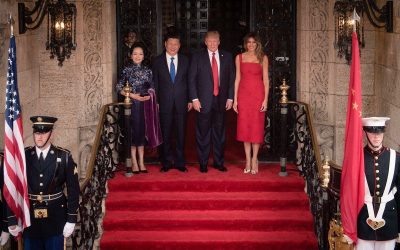
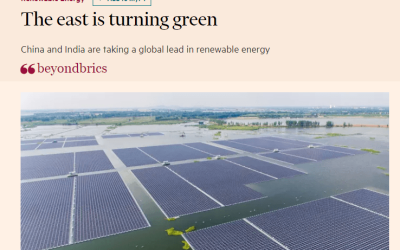
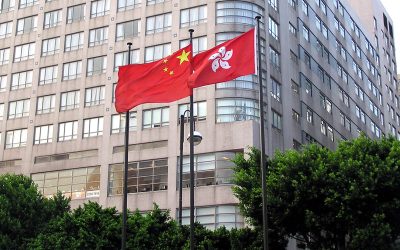

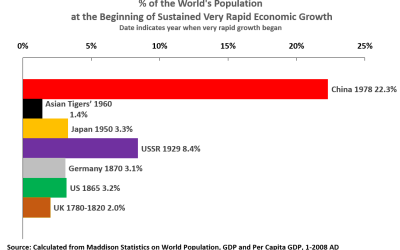
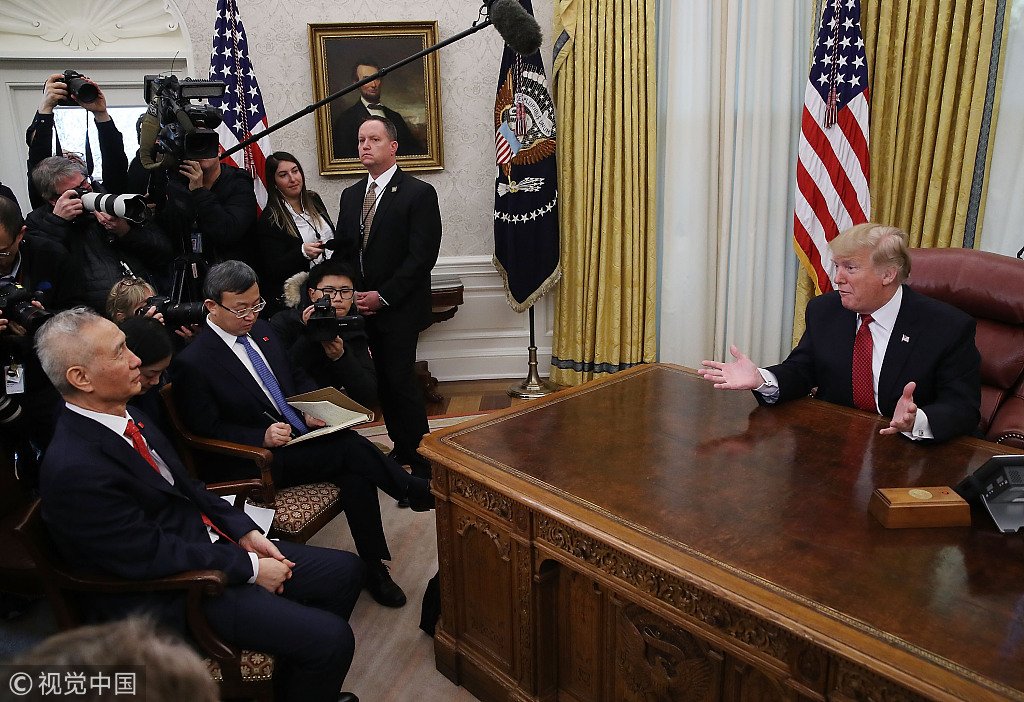
The statistics for January 2019 is out and China shows increases
China’s Jan 2019 Trade Figures are in:
Total Trade RMB 2,730B (+8.7%); Exports RMB 1,500B (+13.9%); Imports RMB1,230B (+2.9%)
In US$396B exports $218B Imports $178B
With Europe 16.9% share of China’s Trade
Exports RMB266.5B (+20.5%); Imports RMB178.3B (+13.5%)
With USA, 11.6% share of China’s trade
Exports RMB252B (+1.9%); Imports RMB63.7B (-38.6%)
Exports to USA amounts to 2.8% of the total GDP of China.
by January the surge in orders by US importers to hedge against tariffs being imposed by Trump must have been less significant.
So we are seeing that US importers still have to import but there is no growth. On the imports into China, the reduction of 38.6% from same time last year shows the tit-for-tat by China is tariff has a large effect. What the January numbers show is that US imports from China in general merchandise are not easy to switch to a different country. A process to engage say a Vietnam clothing factory to supply the same items that have been supplied by a Chinese factory takes several years because the cycles of apparels take one year per cycle. The trade war has been on for only one year and so the US buyers have only been able to meet with their supplier executives to beg for partial price assistance.
For CTI industries, it is even more difficult to switch suppliers because Chinese ODMs have been in control of the whole process since 2000. So the clients such as Apple, N-P, Dell, have been mostly involved in the marketing end of how many to sell and at what price points and delivery schedules. These western giants do not have supply chain intelligence in their operating database, never mind experiential wisdom. So, even if say, Wal-Mart wants to switch to Malaysia for their TVs, they will be starting from scratch seeking out a Malaysian large group and give them time and money to set up their supply chain, which will take 3 years before they can ramp up to volume and quality. The best they can do is to go to their current Chinese ODM and let them arrange to have their feeder network units in ASEAN set up to supply. Even that will take at least one cycle to test delivery and quality.
The fact becoming clear is that China now looks at USA as a supply of farm produce in the main, with Airliners and volume IC Chips as the other sectors. But Airliners can be switched to Airbus from Boeing. As for Chips, those of us with some involvements in China know that in every single category of chips, China has one or more producers. The reason why US chips has been so large in volume is only because China had not punitively gone after US chip makers to boycott them in favour of domestic chps. The ODMs have been simply taking the preferences of their ODM clients to put in Intel, Qualcomm chips, hence the so-called reliance. But once Trump starts to play dirty, it motivates China to ramp up production and it also scares China giants to switch to domestic chips. So, over the medium term, US chips will be shriveled.
When it comes to Huawei, the supplier of 5G Telecom Systems, US criminalizing their boycott of Huawei will not work for the US. Huawei is so far ahead of the technology 5G curve that closing the US, Australia, NZ markets will only mean being saddled with lesser level of Best Practices. Both Ericsson and Nokia are smaller and less experienced in their R&D of 5G products and software, two very long stories.